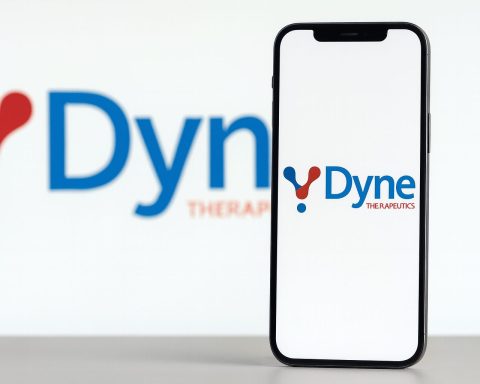Clearmind Medicine Inc. (NASDAQ: CMND, FSE: CWY0) is back in the spotlight today after releasing positive top-line results from the first cohort of its FDA‑approved Phase I/IIa clinical trial for CMND‑100 in alcohol use disorder (AUD). The update lands just one day after the company highlighted a new Israeli patent filing for a non‑hallucinogenic depression therapy, and as a fresh equity offering is expected to close around today’s date. [1]
The cluster of announcements is drawing intense trading interest. As of mid‑afternoon on November 18, CMND shares were changing hands around $0.27, after touching an intraday high near $0.39, on tens of millions of shares traded – dramatically above the stock’s average daily volume under 1 million shares. [2]
Positive safety signal in Clearmind’s first CMND‑100 human cohort
Today’s press release confirms that Clearmind’s first‑in‑human study of CMND‑100, a proprietary non‑hallucinogenic oral drug based on the compound 5‑methoxy‑2‑aminoindane (MEAI), has cleared an important early hurdle. [3]
Key points from the first cohort:
- Trial design: FDA‑approved Phase I/IIa trial in Alcohol Use Disorder, using both single and multiple doses of CMND‑100. The main goals are to assess safety, tolerability, pharmacokinetics and explore preliminary efficacy in heavy binge drinkers or patients diagnosed with AUD. [4]
- Patient group: The first cohort included six participants – two treated at Johns Hopkins University School of Medicine and four at Yale School of Medicine’s Department of Psychiatry – under a multinational, multicenter protocol. [5]
- Safety outcome: The top‑line data show a favorable safety profile:
- No serious adverse events were reported.
- CMND‑100 was described as generally well tolerated across all patients. [6]
- Adherence and feasibility: Investigators reported high adherence to both dosing and trial procedures, supporting CMND‑100’s feasibility and acceptability in a real clinical setting. [7]
Clearmind’s CEO, Dr. Adi Zuloff‑Shani, framed the results as an encouraging first step, noting that the data build on the recent completion of dosing in the initial cohort at tier‑one academic centers such as Johns Hopkins and Yale. [8]
Importantly, this is still very early‑stage data. Today’s update focuses on safety and tolerability, not definitive proof that the drug reduces alcohol consumption or cravings. Further cohorts and a full readout will be needed before investors or clinicians can draw firm conclusions about efficacy.
Why CMND‑100 matters in the alcohol use disorder landscape
Alcohol Use Disorder is one of the most entrenched and costly mental‑health and public‑health challenges globally. Clearmind’s own trial materials and press communications point out that alcohol use is implicated in around 4.7% of all deaths worldwide, underlining the scale of the problem. [9]
Existing medications for AUD – such as naltrexone, acamprosate or disulfiram – can help some patients, but real‑world adherence and overall response rates are limited, and many people receive no pharmacological treatment at all. That therapeutic gap is what makes novel mechanisms so closely watched.
Clearmind is pursuing a different approach:
- Non‑hallucinogenic neuroplastogen: CMND‑100 is based on MEAI, which the company classifies as a non‑hallucinogenic neuroplastogen – aiming to harness some of the neural benefits associated with psychedelic‑derived compounds without inducing classic psychedelic experiences that require intensive monitoring. [10]
- Binge‑behavior focus: Beyond alcohol use disorder, Clearmind’s broader R&D narrative includes binge‑related behaviors and addiction‑adjacent conditions such as cocaine misuse and obesity, positioning MEAI as a platform molecule across multiple compulsive‑consumption disorders. [11]
If later‑stage data show that CMND‑100 can safely reduce drinking or cravings without the logistical burdens of hallucinogenic psychedelics, the drug could potentially compete in a relatively under‑served pharmacotherapy market for AUD. But at this point, only an initial safety signal has been reported, and the small sample size means today’s results are best viewed as a green light to keep going, not as proof of clinical success.
Depression patent expands Clearmind’s MEAI & PEA pipeline
Today’s AUD data arrives alongside ongoing coverage of Clearmind’s latest intellectual‑property move in depression. On November 17, 2025, the company announced that it had filed an Israeli patent application covering a new combination therapy pairing: [12]
- MEAI (5‑methoxy‑2‑aminoindane), the same core compound used in CMND‑100
- N‑acylethanolamines such as palmitoylethanolamide (PEA)
The patent is aimed specifically at treating depression, and stems from Clearmind’s collaboration with Neurothera Labs Inc., a subsidiary of SciSparc Ltd. [13]
A separate article published today by Pharma Now highlights the filing as another step in building a non‑hallucinogenic neuroplastogen platform for mood disorders, pointing to World Health Organization estimates that more than 280 million people live with major depressive disorder worldwide. [14]
According to Clearmind and its partners:
- Preclinical data suggest MEAI may reduce addictive behaviors without blunting natural reward pathways, raising the possibility of treatments that target both addiction and mood. [15]
- The company has now filed 13 patents associated with the Neurothera collaboration alone, while its broader portfolio spans 19 patent families and 31 granted patents, covering MEAI‑based combinations for alcohol use disorder, cocaine addiction, obesity, weight loss and depression. [16]
From an investor‑sentiment standpoint, this IP expansion matters because it:
- Diversifies the pipeline beyond a single AUD indication.
- Strengthens bargaining power for future partnerships or licensing deals if clinical data justify them.
- Potentially supports higher long‑term valuation if the patents are granted and clinically validated – though patent issuance, enforceability and commercial relevance all remain uncertain.
Funding moves, Nasdaq warning and dilution risk
While today’s trial update and patent news are scientifically positive, Clearmind is also navigating financial and listing pressures.
Nasdaq non‑compliance over equity levels
On November 3, 2025, the Nasdaq Stock Market notified Clearmind that it no longer met the minimum stockholders’ equity requirement of $2.5 million for continued listing on the Nasdaq Capital Market. The company’s July 31, 2025 financials reported stockholders’ equity of about $1.07 million. [17]
Key points from the notice and related disclosures:
- Clearmind has until December 18, 2025 to submit a plan to regain compliance.
- Nasdaq may grant up to 180 additional days from the notification date for the company to meet the equity threshold, if the plan is accepted. [18]
- The notice does not immediately affect CMND’s listing status; the stock continues to trade on Nasdaq for now. [19]
November financing steps
To shore up its balance sheet, Clearmind has pursued a series of capital‑raising transactions and conversions, as detailed in SEC filings and investor disclosures: [20]
- Convertible notes
- Under securities purchase agreements signed in September, investors committed up to $10 million of convertible promissory notes.
- As of mid‑November, notes with an aggregate principal amount of $2.5 million had been issued and subsequently fully converted into more than 5.1 million common shares, leaving no outstanding balance on those notes. [21]
- Registered direct offering (closed November 13, 2025)
- Clearmind raised roughly $0.788 million in gross proceeds by selling:
- 958,222 common shares, plus
- Pre‑funded warrants to purchase up to 2,984,146 shares
- The securities were priced at $0.20 per common share and $0.1999 per pre‑funded warrant. [22]
- Additional warrant exercises generated about $183,000 and added just over 2.09 million shares. [23]
- Clearmind raised roughly $0.788 million in gross proceeds by selling:
- Prospectus supplement & new offering expected to close around Nov. 18
- A 424B5 prospectus supplement filed with the SEC describes an offering of:
- 3,991,768 common shares, and
- 1,518,000 pre‑funded warrants,
at $0.25 per share and $0.2499 per pre‑funded warrant. [24]
- The offering is expected to generate approximately $1.38 million in gross proceeds and to close on or about November 18, 2025, subject to customary closing conditions. [25]
- Clearmind says it intends to use the net proceeds, together with existing cash, for general corporate purposes, including operating expenses, clinical and pre‑clinical R&D, working capital and potential acquisitions. [26]
- A 424B5 prospectus supplement filed with the SEC describes an offering of:
In its prospectus disclosures, the company explicitly states that it expects to demonstrate compliance with Nasdaq’s equity rule as a result of this offering plus prior financings and warrant exercises – though there is no guarantee Nasdaq will accept its plan or ultimately deem the company compliant. [27]
For existing shareholders, these steps mean significant dilution: share count rises, but so does the cash buffer and (if all goes as planned) the probability of maintaining a Nasdaq listing.
CMND stock reaction: volatility, micro‑cap realities and sentiment
Today’s trading reflects the classic push‑and‑pull of early clinical success vs. balance‑sheet risk:
- Price action: CMND is trading around $0.27, not far from its 52‑week low and well below its 52‑week high near $2.18, despite the intraday spike on today’s news. [28]
- Volume: Tens of millions of shares have traded hands, versus an average daily volume under 1 million, signaling high speculative and retail interest. [29]
- Micro‑cap risk: With a market capitalization of only a few million dollars and no commercialized products, Clearmind remains in high‑risk, high‑volatility micro‑cap territory. Third‑party analytics platforms also highlight negative earnings and developmental‑stage status. [30]
Recent coverage from outlets like Investing.com, MarketScreener, Reuters and GuruFocus has largely framed today’s trial update as promising but preliminary, while also pointing out Clearmind’s weak equity position and the overhang from the Nasdaq non‑compliance notice. [31]
Key risks and catalysts to watch
For readers following Clearmind Medicine (CMND) over the coming months, several themes stand out:
1. Clinical progress in AUD
- Results from subsequent cohorts in the Phase I/IIa CMND‑100 trial, especially any data on craving reduction, alcohol intake and functional outcomes.
- Expansion and performance of international trial sites, including Hadassah Medical Center and Tel Aviv Sourasky Medical Center, which recently joined the study. [32]
2. Translation of depression IP into the clinic
- Whether the MEAI + PEA combination progresses into human studies for depression, and how Clearmind prioritizes that program against AUD and other binge‑behavior indications. [33]
3. Nasdaq compliance and future dilution
- Nasdaq’s response to Clearmind’s compliance plan and whether additional capital raises or corporate actions (such as reverse splits) are needed to maintain its listing. [34]
- The pace of share issuance relative to clinical progress – a critical factor for long‑term shareholders given the series of recent offerings and conversions. [35]
4. Partnership and strategic options
- Interest from larger pharma or biotech partners in Clearmind’s non‑hallucinogenic neuroplastogen approach, especially if future data confirm a clear safety and efficacy profile. [36]
Bottom line
On November 18, 2025, Clearmind Medicine has delivered exactly what early‑stage biotech investors like to see:
- Positive top‑line safety data from its first human cohort in alcohol use disorder, validating that CMND‑100 appears tolerable enough to keep moving forward.
- Continued build‑out of a patent‑backed pipeline, now extending MEAI‑based, non‑hallucinogenic concepts into depression through a new Israeli filing.
- A path – at least on paper – to regain Nasdaq equity compliance via fresh capital and prior note conversions.
At the same time, CMND remains a micro‑cap clinical‑stage company with no approved products, an elevated risk of dilution, and early‑phase data that are far from definitive. For now, today’s news positions Clearmind as a notable – if speculative – player in the emerging field of non‑hallucinogenic psychedelic‑inspired therapies for addiction and mood disorders.
Anyone considering the stock should carefully review the company’s SEC filings, risk factors and clinical data, and should consult a qualified financial professional before making investment decisions.
References
1. www.globenewswire.com, 2. stocktwits.com, 3. www.globenewswire.com, 4. www.globenewswire.com, 5. www.globenewswire.com, 6. www.globenewswire.com, 7. www.globenewswire.com, 8. www.globenewswire.com, 9. www.globenewswire.com, 10. www.globenewswire.com, 11. www.stocktitan.net, 12. www.globenewswire.com, 13. www.globenewswire.com, 14. www.pharmanow.live, 15. www.finanznachrichten.de, 16. www.globenewswire.com, 17. www.investing.com, 18. www.investing.com, 19. www.investing.com, 20. www.stocktitan.net, 21. www.streetinsider.com, 22. www.stocktitan.net, 23. www.stocktitan.net, 24. www.streetinsider.com, 25. www.stocktitan.net, 26. www.stocktitan.net, 27. www.stocktitan.net, 28. stocktwits.com, 29. stocktwits.com, 30. stocktwits.com, 31. www.investing.com, 32. www.globenewswire.com, 33. www.globenewswire.com, 34. www.investing.com, 35. www.stocktitan.net, 36. www.globenewswire.com










